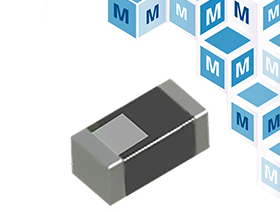Categorization:Product Information
MultiModeFiber: The central glass core is thicker (50 or 62.5μm) and can transmit multiple modes of light. However, its intermodal dispersion is large, which limits the frequency of transmission of digital signals, and with the increase in distance will be more serious. For example: 600MB/KM of fiber in 2KM when only 300MB of bandwidth. Therefore, multi-mode fiber transmission distance is relatively close, usually only a few kilometers.
SingleModeFiber: The central glass core is very thin (core diameter is generally 9 or 10μm), and can only transmit one mode of light. Therefore, its intermode dispersion is very small, suitable for long-distance communication, but there are also material dispersion and waveguide dispersion, so that the single-mode fiber on the spectral width of the light source and the stability of the high requirements, that is, the spectral width should be narrow, the stability should be good. Later it was found that at 1.31 μm wavelength, the material dispersion and waveguide dispersion of single-mode fiber is positive, a negative, and the size is exactly equal. This means that at 1.31 μm wavelength, the total dispersion of single-mode fiber is zero. From the point of view of the loss characteristics of the fiber, 1.31μm is exactly a low-loss window of the fiber. Thus, the 1.31μm wavelength region has become an ideal working window for fiber optic communication, and is now the main working band of practical fiber optic communication systems.The main parameters of 1.31μm conventional single-mode fibers are determined by the International Telecommunication Union ITU-T in the G652 recommendations, so this fiber is also known as G652 fiber.

Single-mode fiber (Single-mode Fiber): general fiber optic patch cords are indicated in yellow, and the connector and protective sleeve are blue; the transmission distance is longer.
Multi-mode fiber (Multi-mode Fiber): general fiber optic jumper with orange, there are also grey, connector and protective sleeve with beige or black; transmission distance is shorter.
The blue is not a 10,000 megabyte anything!!!! That's just an unconventional color
In the implementation of network engineering, there are often rookie novices do not know how to distinguish between single-mode fiber and multi-mode fiber
First of all, we have to understand that both single mode fiber and multi-mode fiber are used to transmit network signals over long distances with high quality. The reason for the distinction between single-mode and multi-mode is based on the propagation of light in its internal mode; light in single-mode fiber is propagated along a straight line, no reflection, so its propagation distance is very far. Multimode fiber can carry multiple optical signal transmission.
Second, from the external light above, the most conventional way to distinguish is; yellow fiber optic line is generally single mode fiber, orange or gray fiber optic line is generally multi-mode fiber. The difference between the two in the core is that the core size of the multimode 50.0μm and 62.5μm; while the single mode is 9.0μm.
Third, the two charts we saw above fiber optics have LC interfaces, then in addition to that, fiber optics has a very rich choice of interfaces.
Carrier inside the fiber optic patch panel inside the application of more FC interfaces. And FTTB commonly used ST interface.
The most commonly used is the LC interface, which is much smaller than all other interfaces. More ports are accommodated inside the fixed unit area of the box switch. Two LCs together in a fiber optic patch cord, called DLC.
Another small interface like the LC, but more used for fiber to the desktop - the MTRJ, which makes the common dual fiber one in and one out inside a single port.